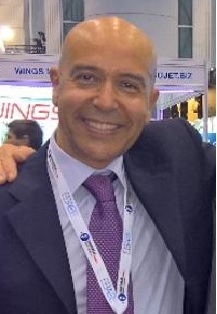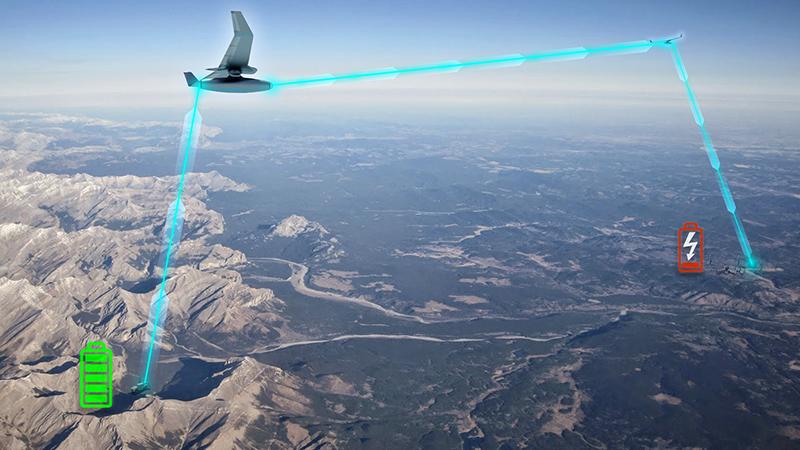DARPAs Aerial Laser Network Could Power Autonomous Warfare
Details
More Products & Services
Products & Services
Aerospace | Aviation Week Network
Aviation Week Network
https://aviationweek.com/themes/custom/particle/dist/app-drupal/assets/awn-logo.svg
Home - Aviation Group Marketing
Aviation Week Network
120 data points on over 156,000 commercial and business aviation aircraft, including military transports. Discover the most trustworthy resource for the complete aircraft history, plus ad hoc reports, month-over-month trend analysis and details on expected deliveries through 2050.
People

Andrea Rossi Prudente
Aviation Week Network

Anthony Lim
Aviation Week Network
Sales director

Becca Balmes
Aviation Week Network

Belinda Tan
Aviation Week Network

Brian Everstine
Aviation Week Network
Editor

Eddie Krankowski
Aviation Week Network
Assistant Manager, Tradeshows

erving dockery
Aviation Week Network

Lisa Tan
Aviation Week Network
Senior Marketing Manager

Mark Thomas
Aviation Week Network
Description
"Logistics wins wars" is a timeless maxim. For more than 100 years, those logistics have been based on shipping petroleum fuels to power aircraft, tanks and ships. DARPA thinks it can move vital warfighting energy around the battlefield a bit faster—at the speed of light.
The research and development agency tells Aviation Week it achieved a power-beaming distance record in April after using a laser to transmit energy over 8.6 km (5.3 mi.). DARPA recorded delivering more than 800 watts during a 30-sec. transmission from a laser on the ground to a ground-based receiver at the U.S. Army's White Sands Missile Range in New Mexico. The record shows progress toward a long-distance wireless transmission system and marks the completion of the first phase of the Persistent Optical Wireless Energy Relay (POWER) program.
In Phase 2, which kicked off with an industry day on May 29, DARPA aims to pass forward laser energy from a ground station through the air to a relay aerial drone, which would then redirect the light back down to a receiver 1.5 km away. The six-month demonstration would use subscale equipment and culminate in transmitting 3 kW to an end receiver, with the aerial relay harvesting 600 watts for its own power, according to a draft solicitation posted in May.Program aims to transmit 5 kW over 200 km through three airborne relaysAn autonomous, distributed and electric battlefield may benefit from power beaming
DARPA is moving quickly into the second phase, after building a functional receiver in about three months during the first phase. The Teravec Technologies receiver uses a parabolic mirror to bounce incoming laser light onto an array of dozens of conventional solar cells inside the device.
“The really cool trick about this is that all the cells receive the same intensity,” Teravec Principal Investigator Raymond Hoheisel says. The parabolic mirror method ensures even energy distribution, reducing heat, and the geometry of the device allows many solar cells to be packed into a compact receiver, he says.
Teravec's receiver also completely captures incoming laser light. “When the laser beam enters this receiver, it's gone—it's like a black hole,” Hoheisel says. “From a signature standpoint, and for operators that are nearby, that's extremely important.”
The receiver is scalable to higher power levels and could be integrated as a wing pod into Class 2 or 3 uncrewed air vehicles (UAV), he adds.
The long-term goal of the POWER program is to demonstrate airborne optical energy relays that deliver 5 kW of electrical power at a ground range of 200 km through three airborne relays, DARPA says. That attempt would come in Phase 3, if the next phase is successful.
In the initial phase, the POWER team “measured more than 20% efficiency from the optical power out of the laser to the electrical power out of the receiver at shorter distances,” the research agency says, noting that the first demonstration's goal was quickly validating the new technology, not efficiency.
“There's ample opportunity for improvement,” DARPA POWER Program Manager Paul Jaffe tells Aviation Week. “For sure, switching from conventional solar cells to ones that are tuned for the laser wavelength will increase the efficiency pretty dramatically.”
The research agency envisions aerial relays in a future energy web network flying at 60,000 ft., where the thinner atmosphere would facilitate power transmission.
DARPA sees a variety of uses for power beaming, including charging long-endurance UAVs, sonobuoys, forward operating bases, special forces units, autonomous ground vehicles and uncrewed submarines. Indeed, if the battlefield becomes more autonomous, distributed and electric—as is happening in the Russia-Ukraine war—fossil fuel-based logistics systems may become outdated.
“This another thing where you are seeing a foreshadowing of it in Ukraine, where a lot of our force structures may not actually have people in them like today,” Jaffe says. “It is not outlandish to imagine a future in which autonomous systems really only need electricity. If you have a system that has a directed energy weapon on it and that has electric mobility, maybe the only thing that you need to do for that resupply is make sure that it has electricity.”
The research and development agency tells Aviation Week it achieved a power-beaming distance record in April after using a laser to transmit energy over 8.6 km (5.3 mi.). DARPA recorded delivering more than 800 watts during a 30-sec. transmission from a laser on the ground to a ground-based receiver at the U.S. Army's White Sands Missile Range in New Mexico. The record shows progress toward a long-distance wireless transmission system and marks the completion of the first phase of the Persistent Optical Wireless Energy Relay (POWER) program.
In Phase 2, which kicked off with an industry day on May 29, DARPA aims to pass forward laser energy from a ground station through the air to a relay aerial drone, which would then redirect the light back down to a receiver 1.5 km away. The six-month demonstration would use subscale equipment and culminate in transmitting 3 kW to an end receiver, with the aerial relay harvesting 600 watts for its own power, according to a draft solicitation posted in May.Program aims to transmit 5 kW over 200 km through three airborne relaysAn autonomous, distributed and electric battlefield may benefit from power beaming
DARPA is moving quickly into the second phase, after building a functional receiver in about three months during the first phase. The Teravec Technologies receiver uses a parabolic mirror to bounce incoming laser light onto an array of dozens of conventional solar cells inside the device.
“The really cool trick about this is that all the cells receive the same intensity,” Teravec Principal Investigator Raymond Hoheisel says. The parabolic mirror method ensures even energy distribution, reducing heat, and the geometry of the device allows many solar cells to be packed into a compact receiver, he says.
Teravec's receiver also completely captures incoming laser light. “When the laser beam enters this receiver, it's gone—it's like a black hole,” Hoheisel says. “From a signature standpoint, and for operators that are nearby, that's extremely important.”
The receiver is scalable to higher power levels and could be integrated as a wing pod into Class 2 or 3 uncrewed air vehicles (UAV), he adds.
The long-term goal of the POWER program is to demonstrate airborne optical energy relays that deliver 5 kW of electrical power at a ground range of 200 km through three airborne relays, DARPA says. That attempt would come in Phase 3, if the next phase is successful.
In the initial phase, the POWER team “measured more than 20% efficiency from the optical power out of the laser to the electrical power out of the receiver at shorter distances,” the research agency says, noting that the first demonstration's goal was quickly validating the new technology, not efficiency.
“There's ample opportunity for improvement,” DARPA POWER Program Manager Paul Jaffe tells Aviation Week. “For sure, switching from conventional solar cells to ones that are tuned for the laser wavelength will increase the efficiency pretty dramatically.”
The research agency envisions aerial relays in a future energy web network flying at 60,000 ft., where the thinner atmosphere would facilitate power transmission.
DARPA sees a variety of uses for power beaming, including charging long-endurance UAVs, sonobuoys, forward operating bases, special forces units, autonomous ground vehicles and uncrewed submarines. Indeed, if the battlefield becomes more autonomous, distributed and electric—as is happening in the Russia-Ukraine war—fossil fuel-based logistics systems may become outdated.
“This another thing where you are seeing a foreshadowing of it in Ukraine, where a lot of our force structures may not actually have people in them like today,” Jaffe says. “It is not outlandish to imagine a future in which autonomous systems really only need electricity. If you have a system that has a directed energy weapon on it and that has electric mobility, maybe the only thing that you need to do for that resupply is make sure that it has electricity.”

Share
Recent Chats
Share via email
Future: handle WhatsApp here
Future: handle LinkedIn here
Future: handle Twitter here
SUBMENU HERE
Share via Chat
Copy Link

